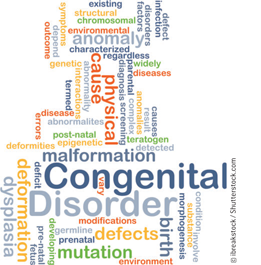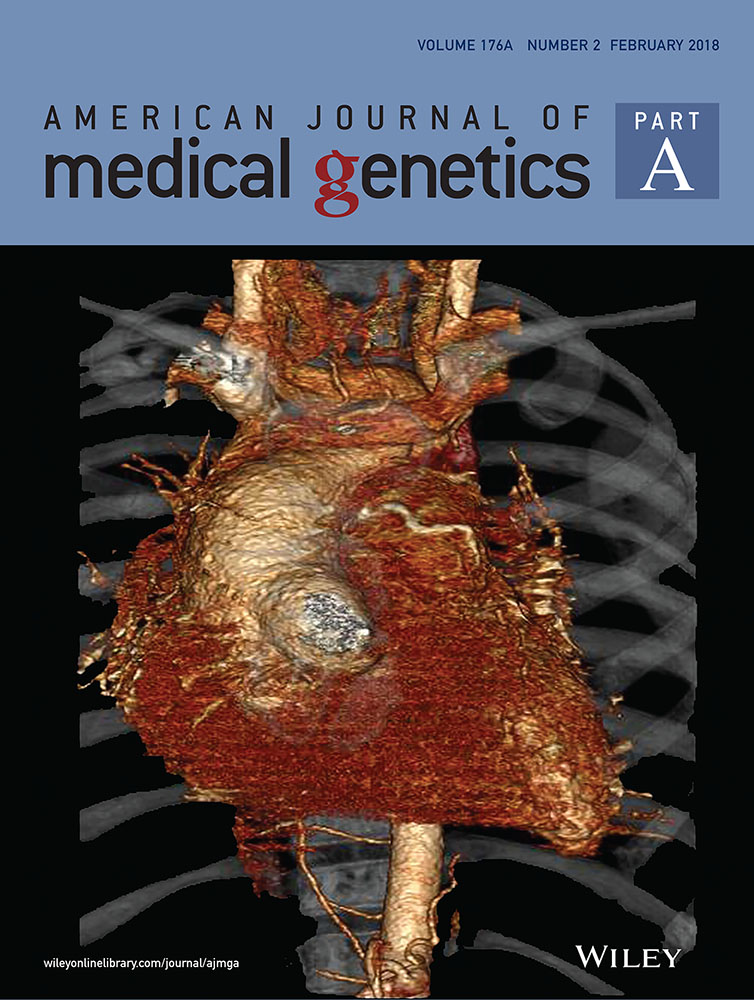Reanalysis of clinical whole-exome sequence data yields multiple new diagnoses
A time-intensive but successful strategy highlights the benefits of data sharing and international collaborations
More than 3,000 separate clinical conditions belong to the huge group of heterogeneous disorders collectively known as congenital anomalies and intellectual disability (CA/ID).
Although most are based on Mendelian inheritance, their uncommon nature, high phenotypic variability, and murky molecular pathways can undermine deinitive diagnoses. After long and often stressful medical “odysseys” that can include invasive imaging, metabolic tests, and biological tests, roughly half of all CA/ID cases remain unsolved.
In a new report, researchers at the Reference Center for Congenital Anomalies and Malformations Syndromes in Dijon, France, and the Orphanomix Physicians' Group in France and Belgium describe their success in resolving some of these cases (Nambot et al, 2017). The molecular diagnoses, based on a reexamination of whole-exome sequencing (WES) data, ended the uncertainty and “provided precious and accurate information for medical care for patients and their families,” they write. Other experts say the labor-intensive effort, however, may not be so easily duplicated at other clinics.

The Study
Based on 3 prior reports that demonstrate the potential of reevaluating WES data, the authors altered their own clinical practice and diagnostic methods to include an annual reanalysis and international datasharing approach. In a retrospective study, the researchers reexamined 416 WES tests that they had conducted over a 3-year period between June 2013 and June 2016.
Initial analyses had led to diagnoses for 104 of the cases, for a yield of 25%. For the 156 tests conducted during the irst 2 years that failed to produce clear diagnoses, the researchers reanalyzed the raw sequencing data every 12 months. (A subsequent report will include data from patients enrolled in the third year.)
Of the 156 reanalyzed patients, the authors obtained 24 new diagnoses, for a success rate of 15.4%. Half of these new diagnoses came from standard diagnostic reviews, including information in new publications, reconsiderations of initially misclassiied variants, and the detection of a copy-number variant (CNV). As part of their reanalysis, the authors pored over reports of genetic variants that impacted well-known human disease genes or that were deemed pathogenic or probably pathogenic in public databases such as ClinVar and DECIPHER. The researchers also developed their own strategy for detecting CNVs and retrospectively applied the analysis to all patients.
The geneticists resolved the other 12 cases through a translational strategy that relied on international data sharing and collaborations such as the Matchmaker Exchange project, which uses case data to help researchers identify patients carrying variants in the same genes. For variants that offered a good correlation between genotype and phenotype but had been reported in few patients, the authors sought out additional patients with matching variants to solidify the genotype-phenotype associations. The same strategy helped them illuminate atypical cases or limited reports of new phenotypes linked to known genes. The effort yielded multiple publications with other research teams and led to the detection of at least 5 genes not previously linked to human disease: KCNA2, FIBP, AP3B2, SLC13A5, and MAB21L1.
Reaction
Kym Boycott, MD, PhD, Professor of Pediatrics at the University of Ottawa and Clinician Scientist at Children's Hospital of Eastern Ontario in Canada, says the French study raises 2 key points. First, she says, the research highlights the “huge amount of potential” in such sequencing data sets. Even 12 months later, she says, the data suggest an additional diagnostic yield of 6% to 8%. “That's ginormous!” Dr. Boycott notes.
The approach's utility, in turn, could help make the case for reimbursement in health care systems that have struggled with how to handle genome-wide data. “Reanalysis of a data set is not something that they've ever really considered, and it's not something that is easily billed,” Dr. Boycott says. Armed with the new data, the clinical community can “advocate for the utility and, hence, the funding of reanalysis of exomes,” she says.
For patients and their families seeking a molecular explanation for CA/ID, a positive test result can be transformative. For 9 patients in the new study, for example, positive WES diagnoses allowed doctors to discuss new therapies or make recommendations for clinical care. In 1 case, a new diet halted seizures and improved the psychomotor development of a girl with an SLC2A1 gene variant linked to GLUT1 deiciency syndrome 1.
Anna C. Need, PhD, Lecturer in Neurogenetics at Imperial College London, coauthored a 2015 study that used new bioinformatics analyses of WES data to obtain genetic diagnoses for 24% of 119 tested patients (Zhu et al, 2015). The French group's approach seems “pretty reasonable,” Need says, and it yielded an impressive number of new diagnoses for families who had likely remained in the dark for years. “There's all this uncertain information, and then after this analysis, 24 more families have got information,” she says. “That is absolutely fantastic.”
A Higher Workload
Even given the above, Need cautions that the new study points to a lingering problem in the field: for the foreseeable future, maximizing diagnoses based on next-generation sequencing will require deep analyses that cannot be automated. “Once you start looking at things that aren't obvious, that don't just spring out at you, it can take hundreds of hours of work,” she says. “I think they did a very thorough job, but whether or not this is something that any clinic can do is another matter.”
Despite the considerable workload and effort needed to integrate a regular reanalysis of clinical WES data into clinical laboratories, the study authors maintain that reinterpretation based on translational research and data sharing can be an effective strategy. Over the 3-year study period, the researchers reduced their median time to diagnosis by 9 months. “Considering the exponential evolution of genetic discoveries and the improvements in computer performance over the past 5 years, prospective reanalysis of nonpositive WES results appears manageable and worthwhile for undiagnosed patients,” they conclude.




